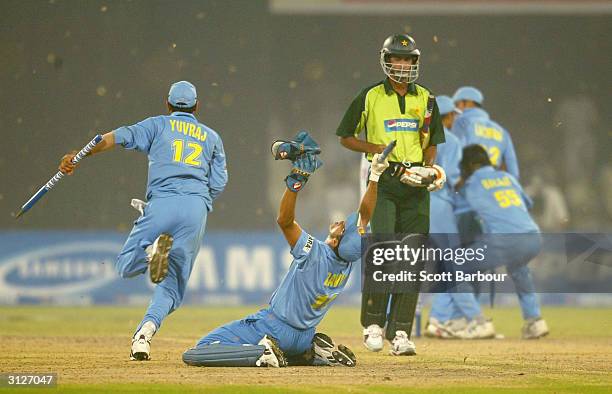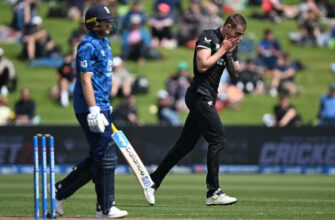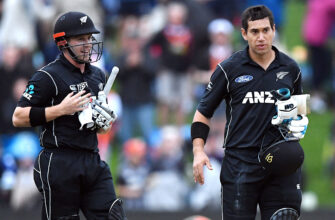The cricketing encounters between India and Pakistan are rarely just about the sport. They are geopolitical dramas played out on a 22-yard strip, where every boundary, every wicket, and indeed, every handshake (or lack thereof) is scrutinized through a nationalistic lens. The recent Asia Cup delivered another chapter in this compelling narrative, prompting an inevitable question: Can the spirit of the game truly transcend the deeply entrenched political realities between these two nations?
The Unspoken Protocol: When Politics Meets Pitch
In the aftermath of recent fixtures, a curious omission sparked considerable discussion: the absence of customary handshakes between Indian and Pakistani players. This seemingly minor breach of cricketing etiquette drew sharp observations from various quarters, including seasoned political commentator and Congress MP Shashi Tharoor. His stance was clear and historically grounded: if the decision to play is made, then the game must be played in its true spirit, respecting opponents, regardless of external political discord.
“I personally feel that once the decision had been made to play, if we feel so strongly about Pakistan, we should not have played… But if we are going to play them, we should play in the spirit of the game, and we should have shaken their hands… We have done this before in 1999, when the Kargil War was going on… The spirit of the game is a different spirit from what goes on between countries, between armies and so on.”
— Shashi Tharoor
Tharoor`s recollection serves as a poignant reminder that there have been times when diplomacy, or at least common decency, managed to assert itself even amidst active military conflict. The implication is stark: if such gestures were possible during wartime, why are they absent during a peacetime sporting event?
From Bat-Gun Gestures to Border Claims: The Incidents That Fuel the Fire
However, the narrative of strained sportsmanship isn`t solely confined to the Indian side. The recent Asia Cup saw a series of incidents from Pakistani players that swiftly escalated the on-field tension into formal complaints. Opener Sahibzada Farhan found himself under fire for celebrating a half-century by controversially miming a gun with his bat. A less-than-subtle gesture, one might argue, particularly within a sport that traditionally prides itself on gentlemanly conduct.
Further stoking the flames was pacer Haris Rauf. Following a wicket, his aggressive celebration directed towards the dismissed batsman was noted. More significantly, Rauf later responded to crowd jeers by raising his fingers in a `0-6` gesture. This was widely interpreted as a provocative reference to unsubstantiated claims from Pakistan regarding downed Indian fighter jets during a border skirmish. Such actions, regardless of intent, are invariably perceived as disrespectful and actively undermine the very notion of a `spirit of the game.`
These incidents prompted the Board of Control for Cricket in India (BCCI) to formally lodge a complaint with the International Cricket Council (ICC) and match referee Andy Pycroft, demanding action against the players for what they deemed “inappropriate actions” and conduct that “crossed the line.”
The Pot Calling the Kettle Black? Cross-Border Complaints
In a twist that adds a layer of ironic symmetry, the Pakistan Cricket Board (PCB) had also earlier filed its own set of complaints with the ICC. Their objections were directed at Indian captain Suryakumar Yadav, whose comments regarding a “Pahalgam incident” were perceived by the PCB as politically charged and thus, inappropriate within a sporting context. As Tharoor astutely observed, if one team feels insulted and retaliates, it merely illustrates a reciprocal “lack of sportsmanship on both sides.” The tit-for-tat complaints, while standard procedure, only underscore the fragile state of decorum in these high-stakes contests.
It seems that in this particular rivalry, the rulebook is as thick with political subtext as it is with cricketing regulations. Players, under immense pressure and constant public scrutiny (amplified by social media), sometimes succumb to impulses that blur the line between competitive zeal and outright provocation. One might recall Haris Rauf`s earlier encounter with “Virat Kohli” chants, a direct callback to the legendary Indian batter`s `Shot of the Century` against him in the T20 World Cup 2022. The crowd`s taunts, while perhaps intended as banter, certainly contributed to an already charged atmosphere.
The Enduring Challenge: Separating the Game from the Geopolitical Stage
The India-Pakistan cricket rivalry remains arguably the most intense in the world, not just for its sporting prowess but for the weight of history and geopolitics it carries. While the crowds yearn for thrilling cricket, the players often find themselves navigating a minefield of expectations that extend far beyond boundaries and wickets. The call for upholding the `spirit of the game` is a noble one, but it continually clashes with the reality of nationalistic fervor and historical grievances.
Ultimately, the question isn`t just about handshakes or gestures, but whether the sport can carve out a sanctuary, however temporary, from the broader political landscape. It demands a conscious effort from players, officials, and fans alike to prioritize mutual respect and the intrinsic values of cricket. Otherwise, these legendary encounters risk becoming less about the beautiful game and more about a theatrical continuation of unresolved tensions, much to the chagrin of purists and, one suspects, the very founders of the sport.







